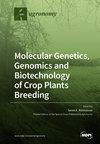Techno-Economic Evaluation of Downdraft Fixed Bed Gasification of Almond Shell and Husk as a Process Step in Energy Production for Decentralized Solutions Applied in Biorefinery Systems
IF 3.3
2区 农林科学
Q1 AGRONOMY
引用次数: 0
Abstract
The objective of the present study was to carry out a technical study of the gasification of almond shells and husks at different temperatures and, subsequently, an economic analysis for the in situ installation of a decentralized unit to produce electricity, through a syngas generator, that would overcome the use of fossil fuels used in this agroindustry. The gasification tests were carried out at three different temperatures (700, 750 and 800 °C) and the results for the tests carried out were as follows: a 50:50 mixture of almond husks and shells was found to have a lower heating value of value of 6.4 MJ/Nm3, a flow rate of 187.3 Nm3/h, a syngas yield of 1.9 Nm3/kg, cold gas efficiency of 68.9% and carbon conversion efficiency of 70.2%. Based on all the assumptions, a 100 kg/h (100 kWh) installation was proposed, located near the raw material processing industries studied, for an economic analysis. The technical–economic analysis indicated that the project was economically viable, under current market conditions, with a calculated net present value of k€204.3, an internal rate of return of 20.84% and a payback period of 5.7 years. It was concluded that thermal gasification is a perfectly suitable technology for the recovery of raw materials of lignocellulosic origin, presenting very interesting data in terms of economic viability for the fixed bed gasification system.生物炼制系统分散式解决方案下吸式固定床气化杏仁壳和壳作为能源生产工艺步骤的技术经济评价
本研究的目的是对在不同温度下的杏仁壳和壳的气化进行技术研究,然后对就地安装一个分散装置,通过一个合成气发电机发电进行经济分析,以克服在这一农业工业中使用的化石燃料。在700、750和800℃3种不同温度下进行了气化试验,结果表明:杏仁壳与杏仁壳以50:50的比例混合,热值为6.4 MJ/Nm3,流量为187.3 Nm3/h,合成气产率为1.9 Nm3/kg,冷气效率为68.9%,碳转化效率为70.2%。基于所有的假设,为了进行经济分析,建议在原材料加工行业附近安装100 kg/h (100 kWh)的装置。技术经济分析表明,在当前市场条件下,该项目在经济上是可行的,计算净现值为204.3欧元,内部收益率为20.84%,投资回收期为5.7年。结论是,热气化是一种非常适合木质纤维素原料回收的技术,在固定床气化系统的经济可行性方面提供了非常有趣的数据。
本文章由计算机程序翻译,如有差异,请以英文原文为准。
求助全文
约1分钟内获得全文
求助全文
来源期刊

Agronomy-Basel
Agricultural and Biological Sciences-Agronomy and Crop Science
CiteScore
6.20
自引率
13.50%
发文量
2665
审稿时长
20.32 days
期刊介绍:
Agronomy (ISSN 2073-4395) is an international and cross-disciplinary scholarly journal on agronomy and agroecology. It publishes reviews, regular research papers, communications and short notes, and there is no restriction on the length of the papers. Our aim is to encourage scientists to publish their experimental and theoretical research in as much detail as possible. Full experimental and/or methodical details must be provided for research articles.
 求助内容:
求助内容: 应助结果提醒方式:
应助结果提醒方式:


